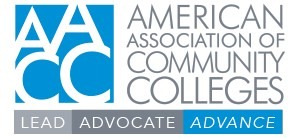Community colleges serve a diverse student population, including students who have immigrated to the United States and students who grew up speaking languages other than English. These students often face unique challenges on their path to a college degree or credential. Supporting their educational attainment enriches our campus communities and strengthens our country as a […]
DataPoints: Women CEOs at community colleges
Well over one-third (36.6%) of community college presidents are women. This is significantly higher than the 30% overall rate of women CEOs reported in the 2017 American College President Survey from the American Council on Education (ACE will be releasing new data next month). Based on an analysis of the American Association of Community Colleges membership database, […]
DataPoints: Enrollment by race/ethnicity
DataPoints: Enrollment by race/ethnicity Between fall 2010 and 2020, the shares of public two-year college students who were Hispanic and Asian increased, while the shares of students who were White and Black declined, according to a College Board analysis. Hispanic students comprised about 28% of community college students in 2020, up from about 19% in […]
DataPoints: Associate attainment in Appalachia
Appalachia has a higher percentage of working-age adults with an associate degree but no bachelor’s degree than the national average, according to a new federal report that examines trends in the Appalachia region. In 2016-20, 10.2% of adults ages 25 to 64 in Appalachia had an associate degree but not a baccalaureate, compared to 9.3% nationally, shows […]
DataPoints: A look at Latino students
More than one-third (36%) of Latino postsecondary education students in fall 2020 were enrolled at a public two-year college, compared to 47% enrolled at a public four-year institution, according to an Excelencia in Education analysis of federal data. Of degrees earned by Latinos in 2019-20, 28% earned an associate degree and 26% earned a certificate, […]
DataPoints: Responsibilities increase for student affairs
A new survey indicates that many student affairs professionals expect to see their responsibilities increase over the next five years in areas such as equity, diversity and inclusion, online student communications and crisis management for students, among others. The survey by NASPA: Student Affairs Administrators in Higher Education released in March shows that nearly all of the […]
DataPoints: Number of HSIs drops
For the first time in 20 years, the number of Hispanic-serving institutions (HSIs) in the U.S. has decreased. It dropped by 10 institutions, from 569 in 2019-20 to 559 in 2020-21, according to analysis by Excelencia in Education. The decrease is due, in part, to enrollment declines, institutional closings and consolidation during the pandemic, the advocacy group said. HSIs […]
DataPoints: Enrollment by race/ethnicity
In fall 2020, more than half (52%) of both Hispanic and American Indian/Alaska Native undergraduates were enrolled in public two-year colleges, according to a College Board analysis of federal data. Between 35% and 44% of members from other racial/ethnic groups attended these colleges. Hispanic students also comprised more than one-quarter (28%) of students at public two-year colleges, […]
DataPoints: Lagging in STEM credentials
Minority students don’t even comprise half of those who are earning STEM certificates and associate degrees. Read the full PDF.
DataPoints: Outcomes for Asian students
Nearly half of Asian students who started at public two-year institutions in 2012 completed college within six years. Read the full PDF.
